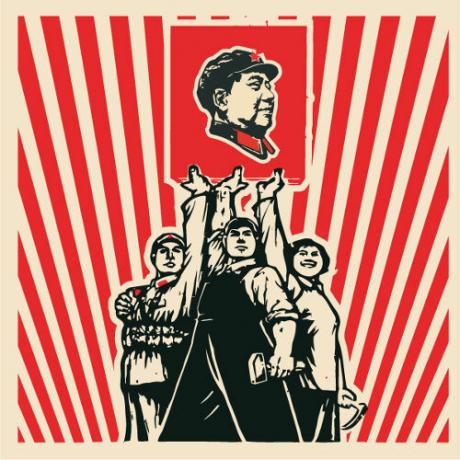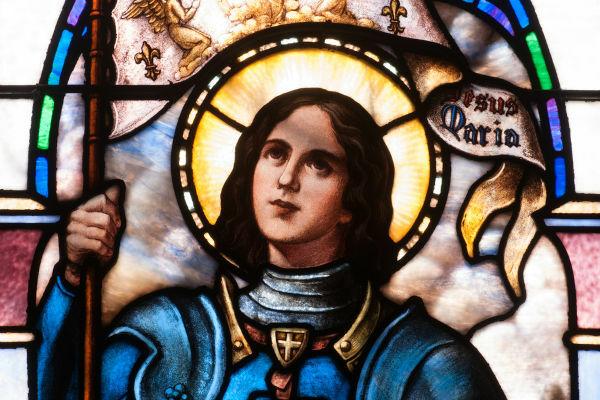Mao Tse-Tung was one of the great names of the 20th century and has a life story marked by controversy. He was the leader of the Revolutionchinese, which transformed the country into a socialist nation from 1949 onwards. From the revolution to the end of his life, he was one of the most influential and powerful people within China and was behind the country's landmark events. It is believed that, during his government, between 40 and 70 million people died.
Accessalso: Korean War: conflict that had wide participation of Chinese soldiers
private life
Mao Tse-Tung (known in another transliteration as Mao Zedong) was born on November 26, 1893, in Shaoshan City, Hunan Province, China. He was the son of a successful farmer in this region called Mao Yichang, and his mother was called wenqimei.
Under the influence of this, studied at a Confucian institution until he was 13 years old, and then returned to his home to help with the work on the farm. Soon his father got a girl to marry Mao, at 14 years of age. The future leader of the Chinese revolution married against her will, and biographers say that Mao abandoned his wife, Luo Yixiu, at his parents' house.
In 1911, Mao began his studies at the Chinese High School Correspondent in Changsha City. That year, important political events marked China and brought it closer to politics. In 1911, the Chinese monarchy was overthrown and the republic was established in the country through the Xinhai Revolution.

After high school, Mao studied to become a teacher and took a job in Beijing as a library assistant. There he stayed between 1917 and 1919 and had direct contact with the Marxism. One of the big influences on Mao was Li Dazhao, important name of the Chinese Communist Party (CCP) years later. When the CCP was founded in 1921, Mao joined the party.
weddings
Mao Tse-Tung married four times throughout his life, and his marriages gave him 10 children. His four wives were: Luoyixiu (1907-1910), YangKaihui (1921-1927), heZizhen (1928-1939) and JiangQing (1939-1976).
Mao's political trajectory
After Mao began studying Marxism, he became increasingly involved in political issues and, as we mentioned, joined the CCP in the 1920s. China's political events and the persecution of communists in that decade they made it gain importance within the CCP framework.
In the early 1920s, there was a partnership between the Kuomintang, also called the Nationalist Party, and the CCP. This partnership followed an orientation expressed by the Soviet Union, but it was also part of the strategy of these two parties to fight the feudal lords that dominated a considerable part of the Chinese territory.
Mao had his functions in the CCP and, over time, it ended up being elected to assume the party committee in Shanghai. It got involved with actions of peasant military training for these to defend themselves from the feudal lords, and then he came to realize that mobilizing them in favor of the revolution was fundamental.
Know more:Peasant revolts in the 14th century
Chinese Civil War
The good relationship between the Kuomintang and the CCP changed radically when the leader of the nationalists, Sun Yat-sen, died in 1925. The new leader, Chiang Kai-shek, ended up starting an intense persecution of the communists because he saw that their growth was a risk to his power project.
This persecution started the Chinese Civil War and led to the elimination of Communists from major cities in China. Mao ended up playing an important role in the fight against the nationalists and was named commander in chief of communist troops in Hunan and Jiangxi.
great march
In 1934, Mao was a big name in the CCP and was involved in an important episode in the history of that party: the great march. This event took place when the communist troops led by Mao were surrounded by nationalist troops in Jiangxi. To avoid annihilation, an escape was initiated that mobilized 100,000 soldiers communists.
Communist soldiers marched over 10,000 kilometers and passed through various regions of the Chinese interior. Virtually 90% of themdied as a result of fatigue, hunger and battles during the flight, which took place between 1934 and 1935. In October 1935, the march ended, the communists established a government in Yan’an, and Mao became the leader of the CCP.
See more: Cuban Revolution: led by Fidel Castro and Che Guevara, made Cuba socialist in 1961
Second Sino-Japanese War
As the Chinese nationalists and communists were fighting each other, a new (but not so new) opponent emerged: the japanese. Since the end of the 19th century, they had imperialist ambitions in China, and from the 1930s onwards, the situation worsened when the Chinese established a puppet state in Chinese territory: the Manchukuo.
The situation worsened to the point where a war broke out from 1937 onwards. You Japanese invaded China with thousands of soldiers, they conquered large cities and carried out countless massacres, such as what happened in Nanjing. Their brutality was one of the hallmarks of this war.
The Japanese threat made the animosity between nationalists and communists lessen but not cease to exist. Even in the Second Sino-Japanese War there was fighting between nationalists and communists. Mao was directly involved in fighting the Japanese at the same time as fighting the nationalists.
The then leader of the CCP had success in mobilizing peasants in mainland China, making the party quite influential in this class, and it succeeded modernize and organize party troops. After the war, the communists were a clearly superior force to the nationalists.
Know more:Nationalism and imperialism - conceptualization and importance for contemporaneity
chinese revolution
the Japanese went defeated and expelled from China in 1945. After that, the civil war has restarted in Chinese territory, and the dispute between Chiang Kai-shek and Mao Tse-Tung was in a very different situation from that which existed in the 1930s. The communist army came to be called People's Liberation Army and had Soviet support.
Communists were more powerful, more organized, and had greater popular support than nationalists. Thus, they were conquering important points of Chinese territory until, in October 1949, Mao made official the creation of the People's Republic of China, transforming the country into a socialist nation.
Chiang Kai-shek, Kuomintang leaders and part of the anti-communist Chinese upper class have ended fleeing the country and settled on the island of Formosa, forming a capitalist government that even exists today.
Mao as ruler
In 1949, began the period when Mao was the great political figure in China. From 1949 until his death year, 1976, he served as president of China and/or president of the CCP. He carried out profound changes in the country and measures that led to the death of millions.
First, Mao carried out campaigns to harass his opponents. Through the campaignsThreeAnti, FiveAnti and anti-rightist, he sought to persecute opponents, members of the economic elite, conservatives, Kuomintang supporters, etc. These events resulted in the arrest, beating and death of millions of Chinese. Many, to avoid persecution, committed suicide.
Mao searched recover the country's economy razed by decades of war. performed the land reform, taking the lands of the old feudal lords and distributing them to the dead peasants. Millions of feudal lords were killed by the government in this process during the 1950s.
In the same decade, he launched the Great Leap Forward, plan to boost the industrialization from China. Peasants were encouraged to abandon their work in the fields and began to be used to produce steel. O result wascatastrophic, as the relocation of workers to metallurgy caused the country's agricultural production to decrease and hunger to become a problem.
It is speculated that about 30 million people died of hunger as a result of that plan. Furthermore, the steel produced by the workers was known to be of poor quality. The failure of the plan started a phase of questioning Mao's influence and resulted in his temporary withdrawal from Chinese power.
Accessalso: Understand the context of the events of the Chinese Revolution
cultural revolution

The failure of the Great Leap Forward isolated Mao in the party and strengthened criticism of him. Aiming to regain his power within the CCP, Mao, together with his wife, Jiang Qing, formulated the Cultural Revolution.
In 1966, the Chinese leader called on students and workers to unite against those he defined as bourgeois and against those he accused of “betraying” the revolution. Mao's idea, as discussed, was solely reassume political power of the CCP and lead China according to its own interests.
So Mao formed the Guardsred and urged its members to denounce all those who did not follow the ideas of the Maoism. The situation got out of hand and became a major persecution against Chinese culture, knowledge and those who spoke out against Mao. You big targets were intellectuals and artists.
Millions of people were sent to "fields ofre-education”, where they were subjected to forced labor and “political re-education”. O TeachingBasic and, mainly, the TeachingHighervirtuallyletinexist in China, and the violence against those who did not follow Maoism spread across the country. The Cultural Revolution is believed to have caused the death of up to 2 million people and it only ended when Mao died in 1976. Are you interested in this topic? Read our text: cultural revolution.
Image credits
[1]Songquan Deng and Shutterstock


